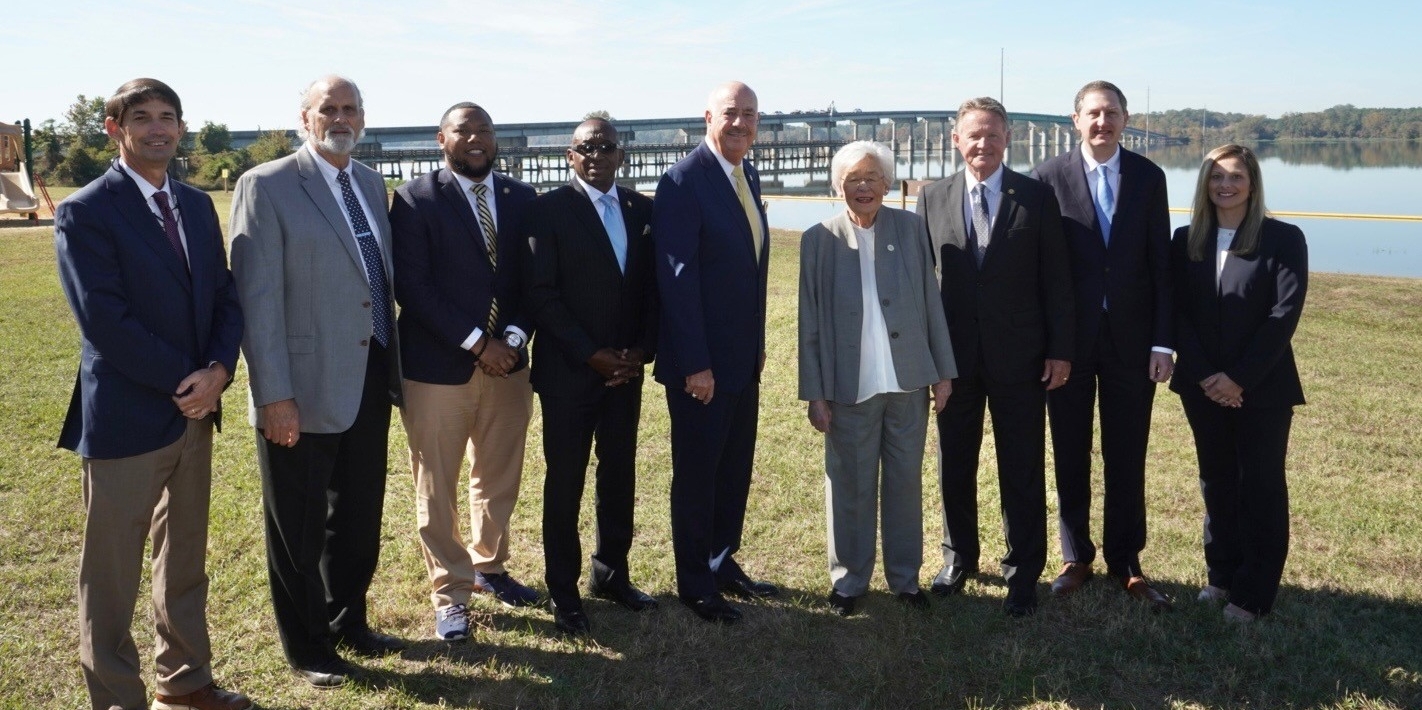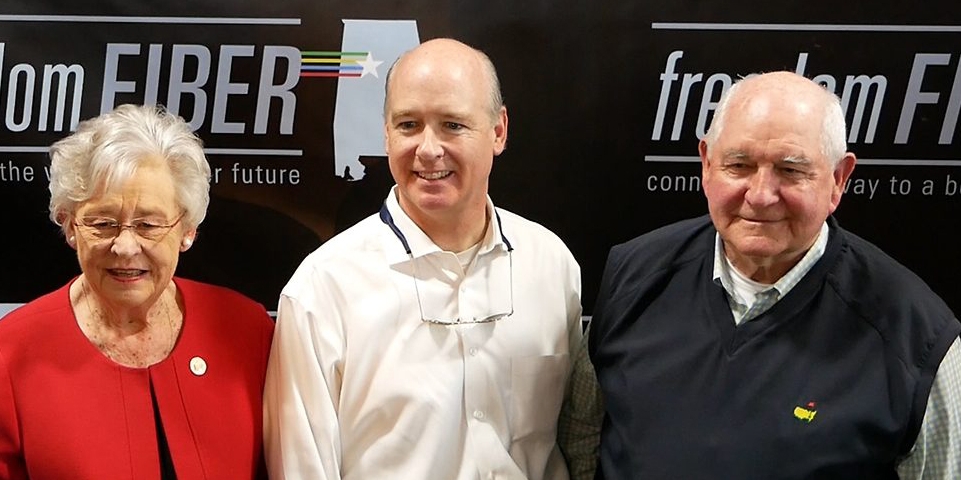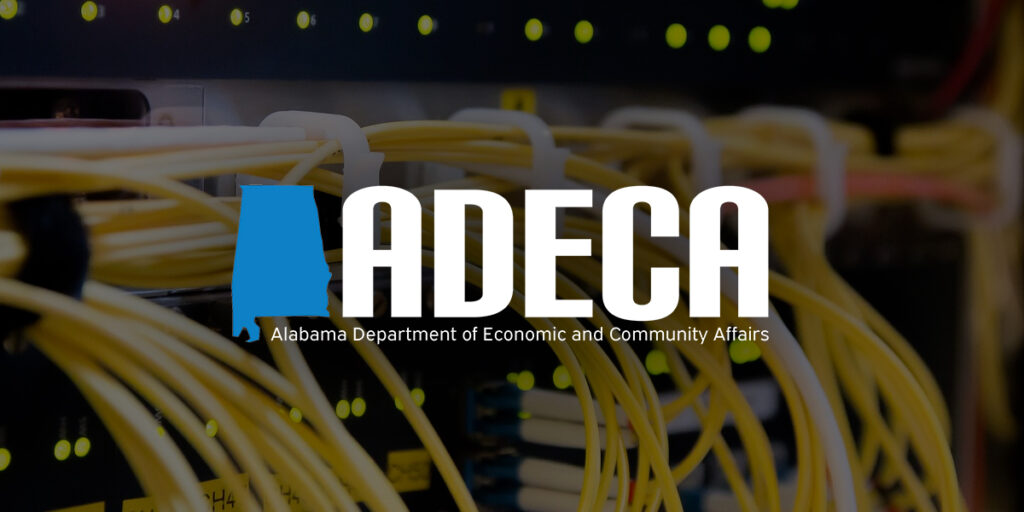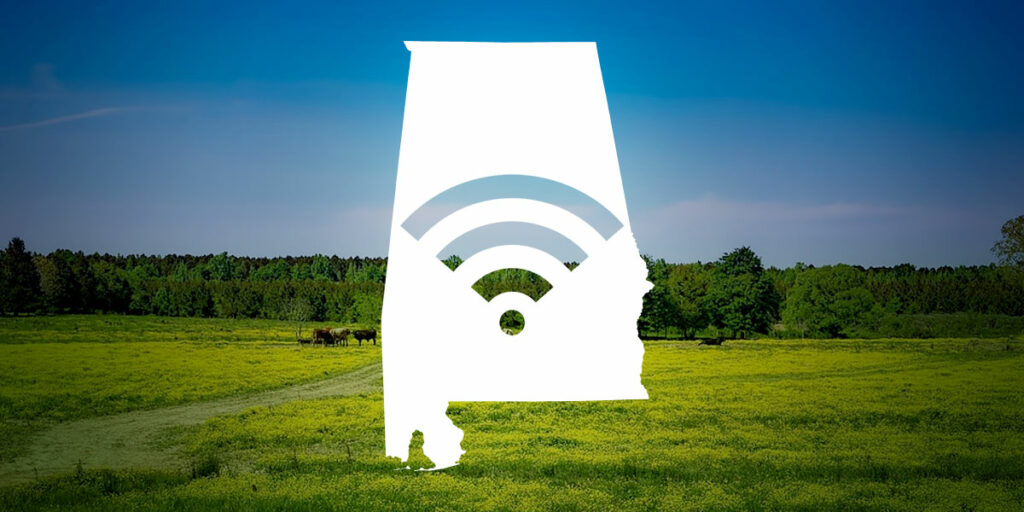Governor Kay Ivey along with state and local leaders gathered Wednesday on the banks of the Alabama River to mark a practical milestone in Alabama’s broadband buildout: the Alabama Fiber Network’s (AFN) middle-mile line has crossed the J. Lee Long Bridge on Alabama Highway 29, one of the final major spans before the statewide backbone is finished.
The ceremony took place in Camden, Ivey’s hometown in Wilcox County.
AFN, the rural-electric-co-op-led consortium building Alabama’s statewide middle-mile, now has service available in all 67 counties as of the end of October, with full project completion still tracking for February 2026, according to the Governor’s Office.
The backbone totals roughly 3,500 miles and is designed to lower transport costs, add resiliency, and shorten timelines for last-mile ISPs extending service to unserved and underserved areas.
“Since my first day as governor, I have made it a top priority to ensure every Alabamian, no matter their zip code, has access to reliable, high-speed internet service through an internet service provider,” Governor Ivey said today.
“This middle-mile network represents a once-in-a-generation investment in our state’s future. It will support our hospitals, schools, businesses, families, and it will ensure Alabama remains competitive in the 21st-century economy. Together, we are building a stronger, more connected Alabama.”
In 2022, Alabama lawmakers appropriated $85 million in federal ARPA funds for broadband, followed by an $82.45 million grant in September 2022 to the then-named Fiber Utility Network to construct the statewide middle-mile. That entity later rebranded as Alabama Fiber Network.
State officials also highlighted Alabama Power as a major infrastructure partner that helped keep the AFN backbone on schedule and more resilient.
“We are proud to be part of this partnership to continue fiber expansion that benefits our state,” said Alabama Power senior vice president of Power Delivery, Scott Moore.
“Projects like this in Camden and throughout the Black Belt region help us strengthen our infrastructure for more dependable service and also help bridge the digital divide to create more opportunities for future growth.”
By expanding fiber optic connectivity across Alabama, the middle-mile network will enable last-mile internet providers to reach homes and businesses in rural and hard-to-serve areas. The infrastructure will also connect critical community institutions such as public safety agencies, healthcare facilities, schools, libraries and local government offices.
ADECA Director Kenneth Boswell noted that the project reflects the state’s commitment to strategic investment and partnership.
“The Alabama Middle-Mile Network is an essential building block for our state’s digital future,” said Director Boswell. “By working together with the governor, the Legislature, our electric cooperatives and private partners, we are ensuring that every region — from the Tennessee Valley to the Gulf Coast, to right here in the Black Belt — can participate fully in the opportunities that broadband brings.”
In January 2022, the state of Alabama appropriated $85 million in federal funding from the American Rescue Plan Act (ARPA) to support broadband expansion. Through a competitive grant process administered by ADECA’s Digital Expansion Division, $82.4 million was awarded to the Alabama Fiber Network (AFN) in September 2022 to build out the middle-mile infrastructure.
Alabama Fiber Network CEO Terry Metze praised the collaboration behind the project.
“This is what partnership looks like,” said Metze. “Through the leadership of Governor Ivey, the guidance of ADECA and the hard work of Alabama’s rural electric cooperatives, we are creating a network that will serve as the backbone for connectivity for generations to come. Our goal is simple — to make sure every Alabamian can access world-class internet service, no matter where they live. This network is truly by Alabama for Alabama.”
Local leaders emphasized the life-changing impact broadband connectivity will bring to rural communities. J. Paul Jones Rural Emergency Hospital in Camden CEO/Administrator Jessica McGraw highlighted what the project means for healthcare providers and patients.
“Reliable broadband is no longer optional in healthcare,” said McGraw. “This network will allow us to prevent unnecessary disruption of services, securely share patient information, expand telemedicine and subsequently improve access to specialists — all of which directly improve the quality of care for people here in Wilcox County and beyond.”
Governor Ivey concluded, “Broadband infrastructure is just as essential as roads and bridges. By finishing this project, we’re not just connecting cables; we’re connecting people, communities and opportunity across Alabama.”
Background on the Alabama Middle-Mile Fiber Network:
- The Alabama Statewide Middle-Mile Network is a roughly 3,500-mile fiber optic network connecting 64 counties. Additional grant funding has enabled the Alabama Fiber Network’s availability in all 67 counties ahead of schedule as of October 31, 2025.
- The middle mile project received $82.4 million in funding from the American Rescue Plan Act (ARPA), administered by ADECA through its Digital Expansion Division.
- The Alabama Fiber Network (AFN), a collaboration of Alabama’s rural electric cooperatives, is deploying the network.
- The network will connect key anchor institutions such as public safety facilities, K-12 schools, libraries, healthcare facilities and government buildings.
- By providing critical middle-mile infrastructure, the network will lower costs for internet service providers, accelerate last-mile broadband deployment and enhance economic development statewide.
Grayson Everett is the editor in chief of Yellowhammer News. You can follow him on X @Grayson270.













